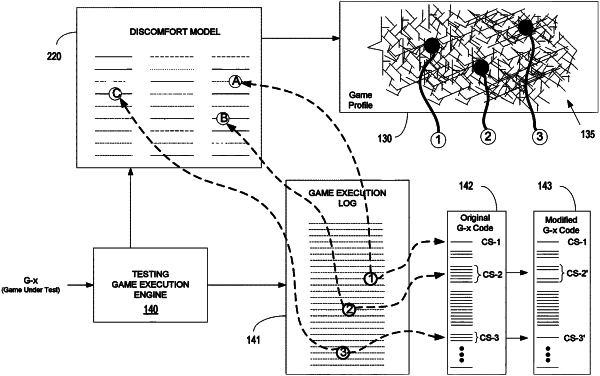| CPC A61M 21/00 (2013.01) [G06F 3/011 (2013.01); G06F 3/012 (2013.01); G06F 18/22 (2023.01); G06F 18/24 (2023.01); G06N 3/08 (2013.01); G06T 19/006 (2013.01); H04N 13/366 (2018.05); A61M 2021/005 (2013.01); A61M 2021/0044 (2013.01); A61M 2205/507 (2013.01); H04N 2213/002 (2013.01)] | 19 Claims |

|
1. A method for classification of content for use in head mounted displays (HMDs), comprising:
accessing a model that identifies a plurality of learned patterns associated with baseline virtual reality (VR) content that is likely to cause discomfort, the baseline VR content including a first plurality of images;
executing a video game application under simulation that is automated to generate VR content including a second plurality of images, the executing of the video game application being controlled by simulated user interaction that is automated;
extracting data based on the VR content;
comparing the data to the model to identify a pattern in the data that correlates to a learned pattern from the model likely to cause discomfort, wherein the pattern in the data includes sequential images in the VR content and simulated controller inputs that corresponds to the learned pattern including sequential baseline images of the baseline VR content and controller inputs;
identifying a point in a progression through the video game application corresponding to the pattern that includes the sequential images in the VR content and the simulated controller inputs;
identifying a section of code in the video game application corresponding to the point that is identified; and
generating a flag indicating that the section of code corresponds to the point in the progression through the video game application that correlates to the learned pattern that is likely to cause discomfort.
|